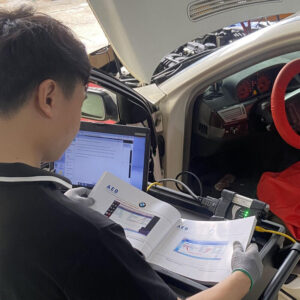
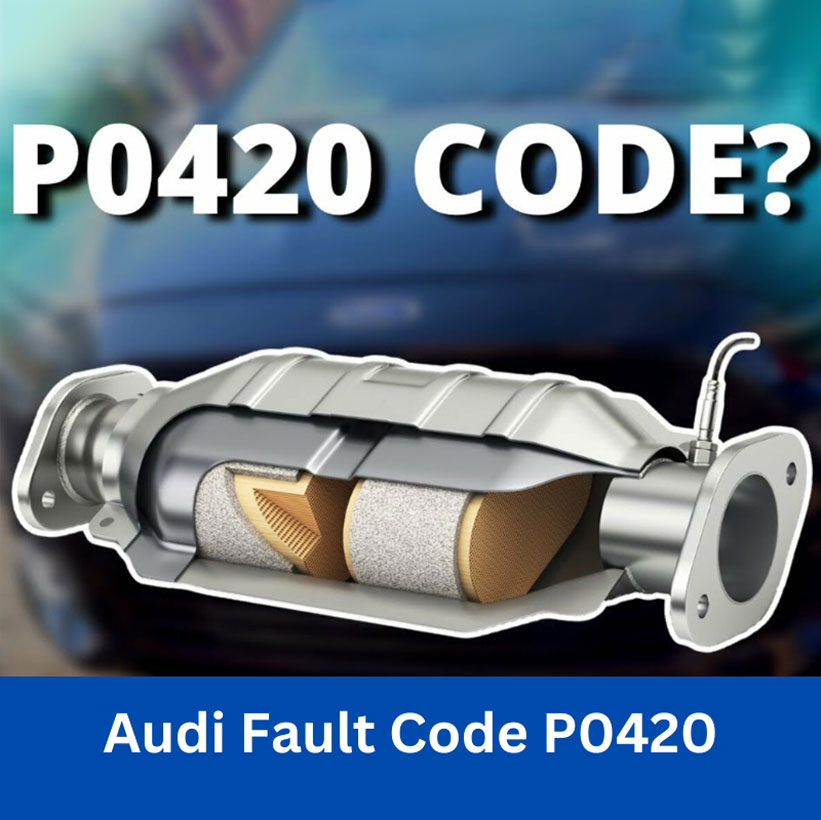
P0420 Audi Fault Code: Causes and How to Fix It
Contents
- 1. What is the P0420 Audi Code?
- 1.1. Symptoms of P0420 Code in Audi
- 1.2. Root Causes of P0420 Audi Code
- 2. How to Fix P0420 Audi Code?
- 2.1. Tools Required for Diagnosis and Repair
- 2.2. Step-by-Step Diagnostic Procedure
- 2.3. Possible Way to Fix P0420 Error on Audi
- 2.4. Post-Repair Verification
- 3. Commonly Related Fault Codes to P0420 Audi DTC
- 3.1. Oxygen Sensor Fault Codes (O2 Sensor Issues)
- 3.2. Fuel Trim / Air-Fuel Ratio Related Codes
- 3.3. Catalyst-Specific Codes
- 3.4. Exhaust Temperature Sensor Codes (on some Audis)
- ✅ Summary
- 4. How to Prevent the P0420 Audi Code
- Need Help Fixing P0420 Audi Code?
The P0420 Audi fault code is a common issue related to the Catalyst System Efficiency Below Threshold Bank 1. This article provides detailed insights into its causes, symptoms, and effective solutions. If you’re an Audi owner or an automotive technician, understanding and resolving this fault is crucial for vehicle performance and emissions compliance.
1. What is the P0420 Audi Code?
P0420 is a diagnostic trouble code (DTC) that signals a problem with the catalytic converter in Bank 1. The catalytic converter is responsible for reducing harmful emissions by converting toxic gases into less harmful substances. When the powertrain control module (PCM) detects that the converter is not operating efficiently, it triggers the P0420 code.
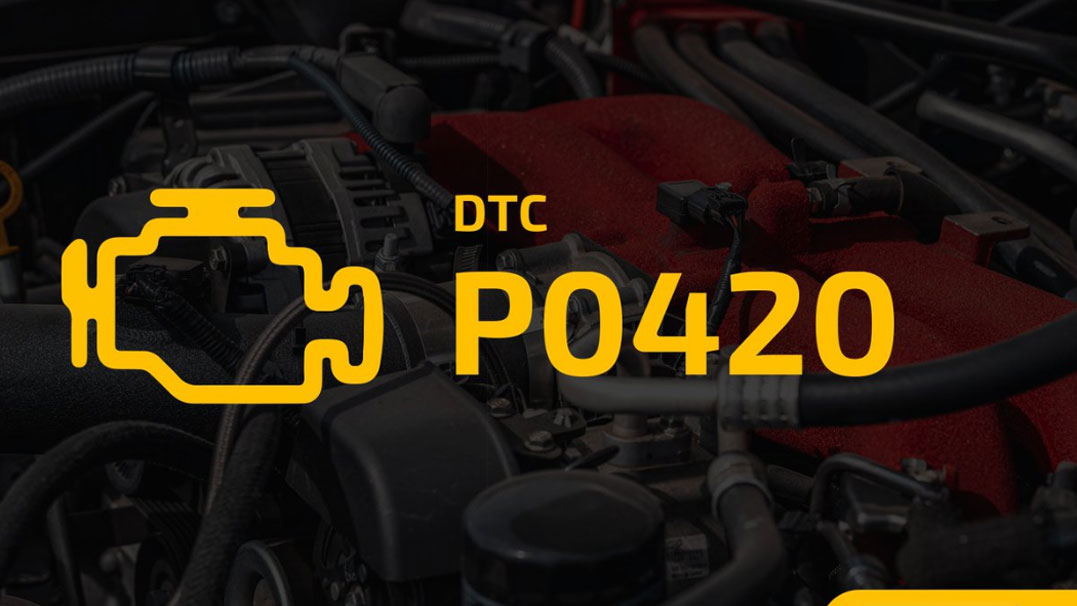
The catalytic converter plays a vital role in your Audi’s emission control system. It’s designed to convert harmful pollutants in the exhaust gases, such as hydrocarbons (HC), carbon monoxide (CO), and nitrogen oxides (NOx), into less harmful substances like water vapor, carbon dioxide, and nitrogen. This conversion process is essential for both environmental protection and ensuring your vehicle meets regulatory emission standards.
When the PCM registers a P0420 Audi diagnostic code, it signifies that the downstream oxygen sensor (located after the catalytic converter) is detecting fluctuations in oxygen levels that are too similar to those detected by the upstream oxygen sensor (located before the catalytic converter). Ideally, the catalytic converter should be “using up” or converting the pollutants, resulting in a smoother, more stable signal from the downstream sensor compared to the upstream sensor. If this difference isn’t significant enough, the PCM interprets it as the catalyst system not operating efficiently.
1.1. Symptoms of P0420 Code in Audi
While the P0420 Audi fault code is primarily an electronically reported issue, it often manifests through several noticeable symptoms that Audi owners and technicians should be aware of. Recognizing these signs can provide valuable clues and help in the diagnostic process before a scan tool even confirms the presence of the code. Here are some common symptoms associated with a P0420 code in your Audi:
-
The Check Engine Light (CEL) is Illuminated: This is the most direct and obvious symptom. The CEL will typically remain lit on the dashboard to alert the driver that a problem has been detected by the vehicle’s OBD-II system. While the CEL can indicate various issues, if it appears and you suspect an exhaust or emissions-related problem, the P0420 code is a likely culprit.
-
Reduced Engine Power and Acceleration Issues: If the catalytic converter is not functioning correctly, it can create backpressure in the exhaust system, hindering the engine’s ability to expel exhaust gases efficiently. This can lead to a noticeable decrease in engine power, especially during acceleration. Your Audi might feel sluggish or less responsive than usual.
-
Decreased Fuel Efficiency: An inefficient catalytic converter can affect the overall combustion process and the readings from the oxygen sensors, potentially leading the PCM to adjust the fuel-air mixture incorrectly. This can result in your Audi consuming more fuel than normal, leading to more frequent trips to the gas station.
-
Strong Sulfur or Rotten Egg Smell from the Exhaust: A failing catalytic converter may not be able to fully convert sulfur compounds present in the fuel. This can result in a distinct and unpleasant sulfurous odor, often described as the smell of rotten eggs, emanating from the exhaust system. While not always present with a P0420 code, it’s a strong indicator of a potential catalytic converter issue.
-
Unusual Noises from the Exhaust System: In some cases, a failing catalytic converter can produce rattling or hissing noises, particularly when the engine is running. This could be due to internal damage or restrictions within the converter.
-
Failed Emissions Test: If your Audi is due for an emissions test, a P0420 code will almost certainly result in a failure. The purpose of the catalytic converter is to reduce harmful emissions, and if it’s not functioning efficiently, your vehicle will likely exceed the allowable limits for pollutants.
1.2. Root Causes of P0420 Audi Code
Here are some of the common causes of the Audi P0420 code:
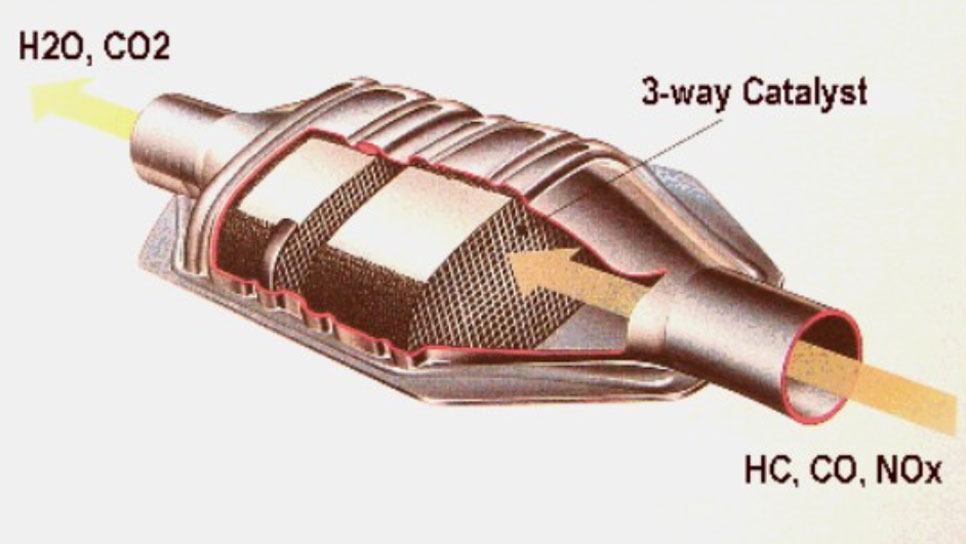
-
Failing Catalytic Converter: Over time and with normal use, the catalytic converter can naturally degrade and lose its efficiency. This is a common reason for the P0420 code, especially in older vehicles with high mileage. The internal components of the converter can become contaminated, clogged, or damaged, reducing its ability to effectively catalyze exhaust gases.
-
Faulty Oxygen Sensors: The oxygen sensors (O2 sensors) play a critical role in monitoring the exhaust gases both before (upstream) and after (downstream) the catalytic converter. The PCM uses the signals from these sensors to assess the converter’s efficiency. If one or both of the oxygen sensors are malfunctioning, they can provide incorrect readings to the PCM, leading it to falsely believe that the catalytic converter is not working properly and trigger the P0420 code. This could involve sensors that are slow to respond, providing inaccurate voltage readings, or have failed completely.
-
Exhaust Leaks: Leaks in the exhaust system, particularly before the downstream oxygen sensor, can introduce extra oxygen into the exhaust stream. This can skew the readings of the downstream sensor, making it appear as though the catalytic converter is not efficiently reducing oxygen levels. Even small leaks can sometimes be enough to trigger the P0420 code.
-
Incorrect Fuel Type: Using leaded fuel in a vehicle designed for unleaded fuel can severely damage the catalytic converter over time, leading to reduced efficiency and the triggering of the P0420 code. While less common in modern vehicles due to the widespread availability of unleaded fuel, it’s still a potential factor to consider, especially if the vehicle’s history is unknown.
-
Engine Coolant Temperature Sensor Failure: The engine coolant temperature sensor provides vital information to the PCM about the engine’s operating temperature. If this sensor is faulty and provides an incorrect reading (e.g., indicating the engine is colder than it actually is), it can cause the PCM to enrich the fuel-air mixture. This rich mixture can overload the catalytic converter and reduce its efficiency.
-
High Fuel Pressure or Injector Leak: Excessive fuel pressure or leaking fuel injectors can also lead to a rich fuel-air mixture. This overabundance of fuel can overwhelm the catalytic converter, hindering its ability to effectively process the exhaust gases and potentially causing damage over time.
-
Misfire in Cylinders: Engine misfires result in unburned fuel entering the exhaust system. This unburned fuel can overheat and damage the catalytic converter, significantly reducing its efficiency. Addressing any underlying engine misfire issues is crucial when diagnosing a P0420 code.
-
Oil Contamination: If engine oil is leaking into the combustion chamber (e.g., due to worn piston rings or valve seals), it will be burned and the resulting contaminants can coat the internal surfaces of the catalytic converter, reducing its effectiveness. Similarly, coolant leaks into the combustion chamber can also have detrimental effects on the catalytic converter.
-
Damaged or Incorrectly Installed Catalytic Converter: In rare cases, the catalytic converter itself might be damaged (e.g., due to physical impact) or it might have been replaced with an aftermarket converter that doesn’t meet the original equipment manufacturer (OEM) specifications for your Audi.
2. How to Fix P0420 Audi Code?
2.1. Tools Required for Diagnosis and Repair
- VAS 5054A / VCX SE
- Odis Service software
- Exhaust System Inspection Tools
- Oxygen Sensor Socket
- Catalytic Converter Removal Tools
=> You may need this post:
2.2. Step-by-Step Diagnostic Procedure
-
Initial Scan and Code Verification:
-
Begin by connecting a reliable OBD-II scanner to your Audi’s diagnostic port, typically located under the dashboard on the driver’s side. High-quality scanners suitable for both DIY enthusiasts and professional technicians are available at autoexplain.com.
-
Retrieve all stored diagnostic trouble codes (DTCs). Carefully note all the codes present, as there might be other related codes that provide valuable clues. Verify that P0420 is indeed present.
-
Check for any additional codes related to oxygen sensors, misfires, or fuel trim, as these could indicate underlying issues contributing to the P0420 code.
-
-
Review Freeze Frame Data:
-
Utilize your OBD-II scanner to review the freeze frame data associated with the P0420 code. This data captures a snapshot of the engine’s operating conditions (such as engine speed, load, coolant temperature, and fuel trim) at the precise moment the code was triggered.
-
This information can provide valuable context and help you understand the circumstances under which the catalyst efficiency issue was detected. For example, it might show if the code typically sets under specific driving conditions, such as after the engine has reached operating temperature or during acceleration.
-
-
Inspect the Catalytic Converter:
-
Locate the catalytic converter on Bank 1. In an Audi inline engine, there is typically only one bank. In V-type engines, Bank 1 is usually the side of the engine containing cylinder number one. Consult your Audi’s repair manual if you are unsure of the location.
-
Visually inspect the catalytic converter for any signs of physical damage, such as dents, cracks, rust, or excessive heat discoloration (often a bluish or purplish tint).
-
If possible and safe to do so, use an infrared thermometer to check the surface temperature of the catalytic converter both before and after the catalytic element while the engine is running and at operating temperature. A properly functioning converter should typically be significantly hotter on the outlet side compared to the inlet side. Unusual temperature readings (e.g., no significant temperature increase or extreme overheating) can indicate a problem with the converter’s internal function or a blockage.
-
-
Test Oxygen Sensors:
-
Access the live data stream using your OBD-II scanner to monitor the real-time voltage output of both the upstream (pre-catalyst) and downstream (post-catalyst) oxygen sensors.
-
Upstream Sensor: The voltage of the upstream oxygen sensor should fluctuate rapidly and regularly between approximately 0.1V and 0.9V as it monitors the oxygen content in the exhaust gases before they enter the catalytic converter.
-
Downstream Sensor: The voltage of the downstream oxygen sensor, located after the catalytic converter, should typically show a much more stable reading, usually hovering around 0.45V. Some variation is normal, but it should not mirror the rapid fluctuations of the upstream sensor. If the downstream sensor’s readings are fluctuating similarly to the upstream sensor’s, it suggests that the catalytic converter is not effectively buffering the oxygen levels, indicating reduced efficiency.
-
You can also use a digital multimeter to directly test the voltage output and response time of the oxygen sensors. Consult your Audi’s repair manual for specific testing procedures and expected values for your model. Slow-responding or out-of-range readings indicate a faulty sensor that may need replacement. High-quality replacement oxygen sensors can be found at autoexplain.com.
-
-
Check for Exhaust Leaks:
-
Thoroughly inspect the entire exhaust system, from the exhaust manifolds to the tailpipe, for any signs of leaks. Pay close attention to joints, gaskets, and welds.
-
A smoke machine is an effective tool for detecting exhaust leaks. By introducing smoke into the exhaust system under slight pressure, any leaks will become readily apparent as smoke escapes. This tool is a valuable asset for any automotive technician and is often available through suppliers like autoexplain.com.
-
Manually inspect all exhaust components, including exhaust manifolds, pipes, mufflers, and resonators, for any visible cracks, holes, or corrosion that could be causing a leak, especially in the vicinity of the upstream and downstream oxygen sensors.
-
-
Inspect Wiring and Connections:
-
Carefully examine the wiring and electrical connectors leading to both the oxygen sensors and the catalytic converter (if applicable, some catalytic converters have integrated temperature sensors).
-
Look for any signs of damage, such as frayed or cracked wires, loose or corroded connectors. Ensure that all connections are secure and clean. Poor electrical connections can lead to incorrect sensor readings and trigger the P0420 code. Use contact cleaner specifically designed for automotive electrical connections to ensure good conductivity.
-
2.3. Possible Way to Fix P0420 Error on Audi
Solution 1. Clean Catalytic Converter
-
If minor clogging is suspected, use a catalytic converter cleaner by pouring it into the fuel tank as per instructions.
- Use a catalytic converter cleaning solution.
- Add the cleaner to your fuel tank.
- Drive the vehicle for at least 150 miles or keep the engine at 2500 RPMs for 30 minutes.
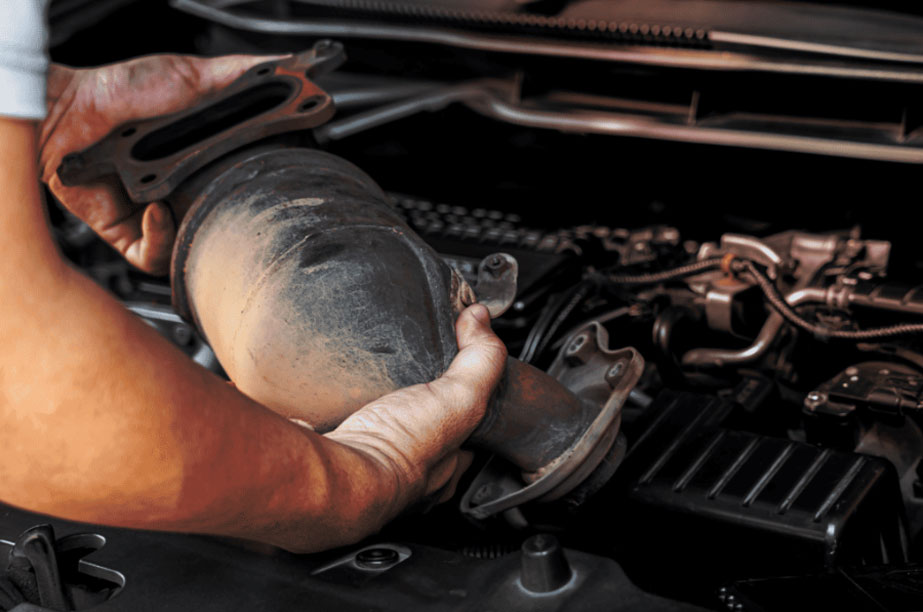
-
Important Note: Catalytic converter cleaners are not a guaranteed fix and are often more effective for preventative maintenance or very mild clogging. If the catalytic converter is significantly degraded or physically damaged, cleaning will likely not resolve the underlying issue, and replacement will be necessary.
Solution 2. Replace the Catalytic Converter
-
If cleaning proves ineffective or if the catalytic converter shows signs of physical damage (like a rattling noise), replacement with an OEM-approved catalytic converter is often the most reliable solution for a persistent P0420 Audi Catalyst System Efficiency Below Threshold issue.
-
Removal Procedure:
-
Allow the exhaust system to cool completely before beginning.
-
Carefully remove any heat shields or protective covers surrounding the catalytic converter.
-
Disconnect the electrical connectors for the upstream and downstream oxygen sensors.
-
Use an appropriate oxygen sensor socket to carefully remove the sensors from the old converter.
-
Apply penetrating oil to the bolts or fasteners connecting the catalytic converter to the exhaust pipes and allow it to soak in.
-
Using the correct wrenches or sockets, loosen and remove the bolts or fasteners. You may need a catalytic converter removal tool in some cases.
-
Carefully remove the old catalytic converter.
-
-
Installation Procedure:
-
Ensure the mating surfaces of the exhaust pipes are clean.
-
Position the new, OEM-approved catalytic converter in place, ensuring proper alignment.
-
Install new gaskets or seals as recommended by the manufacturer.
-
Securely tighten the bolts or fasteners to the manufacturer’s specified torque.
-
Reinstall the oxygen sensors, ensuring they are properly tightened. Avoid over-tightening.
-
Reconnect all electrical connectors for the oxygen sensors.
-
Reinstall any heat shields or protective covers.
-
Solution 3. Replace Faulty Oxygen Sensors
-
If diagnostic testing indicates that one or both oxygen sensors are malfunctioning, replacing them is essential.
-
Removal Procedure:
-
Disconnect the electrical connector from the faulty oxygen sensor.
-
Use an oxygen sensor socket (a specialized socket with a slot for the sensor’s wiring) to carefully unscrew and remove the sensor from its mounting in the exhaust pipe.
-
-
Installation Procedure:
-
Apply a small amount of anti-seize compound (specifically designed for oxygen sensors) to the threads of the new sensor. Be careful not to get any compound on the sensor tip.
-
Thread the new oxygen sensor into its mounting hole and tighten it securely using the oxygen sensor socket. Avoid over-tightening.
-
Reconnect the electrical connector.
-
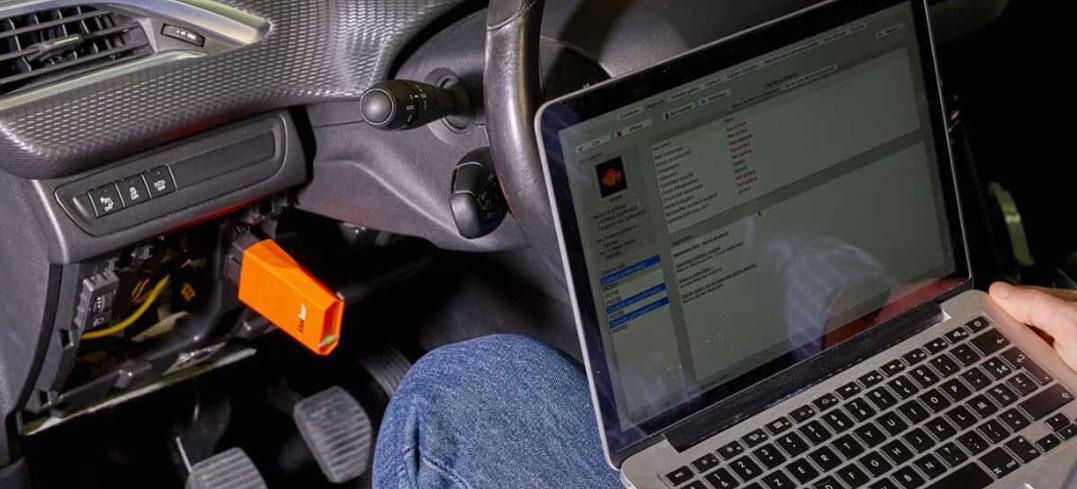
Solution 4. Repair Exhaust Leaks
-
If exhaust leaks were detected during the diagnostic process, they must be properly repaired.
-
Identify the precise location and source of the leak (e.g., a damaged gasket, a cracked pipe, or a loose manifold).
-
Depending on the severity and location of the leak, repairs may involve replacing damaged components (like gaskets or sections of pipe) or resealing joints with high-temperature exhaust sealant.
-
Ensure that all repairs are carried out correctly to create a tight and leak-free exhaust system.
-
After completing the repairs, re-inspect the exhaust system using a smoke machine to verify that all leaks have been effectively eliminated.
Solution 5. Addressing Underlying Ignition System Issues
- If the diagnostic process revealed any underlying ignition system problems, such as engine misfires, these must be addressed to prevent further damage to the catalytic converter and the recurrence of the P0420 code.
- Check the spark plugs for wear, fouling, or damage, and replace them if necessary with the correct type and gap for your Audi model.
- Inspect the ignition coils for proper operation and replace any that are faulty.
- Ensure the spark plug wires (if applicable) are in good condition and properly connected.
2.4. Post-Repair Verification
-
After completing all necessary repairs, use the OBD-II scanner to clear all stored fault codes, including the P0420 Audi Fault Code.
-
Perform a thorough test drive under various driving conditions to allow the system to recalibrate and to check if the check engine light illuminates again.
-
Continuously monitor the vehicle for any returning symptoms associated with the P0420 code. It may take some driving cycles for the PCM to fully assess the effectiveness of the repairs.
3. Commonly Related Fault Codes to P0420 Audi DTC
3.1. Oxygen Sensor Fault Codes (O2 Sensor Issues)
These sensors monitor oxygen levels before and after the catalytic converter. If they fail, the car might “think” the catalyst isn’t working.
-
Audi DTC P0130 – O2 Sensor Circuit Malfunction (Bank 1, Sensor 1)
-
Audi DTC P0133 – O2 Sensor Slow Response (Bank 1, Sensor 1)
-
Audi DTC P0134 – O2 Sensor No Activity Detected (Bank 1, Sensor 1)
-
Audi DTC P0136 – O2 Sensor Circuit Malfunction (Bank 1, Sensor 2)
-
Audi DTC P0140 – O2 Sensor No Activity (Bank 1, Sensor 2)
-
Audi DTC P0141 – O2 Sensor Heater Circuit Malfunction (Bank 1, Sensor 2)
✅ Sensor 1 is upstream (before the catalytic converter), Sensor 2 is downstream (after the catalytic converter).
3.2. Fuel Trim / Air-Fuel Ratio Related Codes
If your engine is running too rich or too lean, it can harm the catalytic converter and trigger a P0420.
-
P2195 – O2 Sensor Signal Biased/Stuck Lean (Bank 1, Sensor 1)
-
P2196 – O2 Sensor Signal Biased/Stuck Rich (Bank 1, Sensor 1)
3.3. Catalyst-Specific Codes
Some Audi vehicles (especially V6/V8) might have two banks and may show codes for both.
-
Audi Code P0421 – Warm-Up Catalyst Efficiency Below Threshold (Bank 1)
-
P0422 – Main Catalyst Efficiency Below Threshold (Bank 1)
-
P0430 – Catalyst Efficiency Below Threshold (Bank 2)
-
P0423 – Heated Catalyst Efficiency Below Threshold (Bank 1)
3.4. Exhaust Temperature Sensor Codes (on some Audis)
These are found on higher-end Audi engines or TDI engines.
-
P0544 – Exhaust Gas Temperature Sensor Circuit (Bank 1 Sensor 1)
-
P2031 – EGT Sensor Circuit (Bank 1 Sensor 2)
✅ Summary
-
These codes often show up together with P0420 during diagnosis.
-
They help identify whether the problem is really with the catalytic converter, or a related sensor/system.
-
Fixing an O2 sensor or fuel trim problem can sometimes resolve a P0420 without needing to replace the catalytic converter.
4. How to Prevent the P0420 Audi Code
-
While the P0420 Audi Bank 1 Catalyst Efficiency code can sometimes be unavoidable, adopting these proactive maintenance habits can significantly reduce the likelihood of its occurrence and help maintain the health of your Audi’s emissions system.
-
Utilize High-Quality Fuel and Engine Oil: Employing the fuel grade recommended by Audi and using high-quality engine oil that meets the manufacturer’s specifications can help ensure optimal engine performance and minimize the risk of contaminants reaching the catalytic converter.
-
Regularly Inspect and Replace O2 Sensors: Oxygen sensors have a limited lifespan. Following Audi’s recommended maintenance schedule for O2 sensor inspection and replacement can help prevent them from becoming sluggish or providing inaccurate readings that could indirectly trigger a P0420 code.
-
Promptly Address Exhaust System Leaks: Regularly inspect your Audi’s exhaust system for any signs of leaks, such as unusual noises or the smell of exhaust fumes inside the cabin. Repairing leaks promptly prevents them from affecting oxygen sensor readings and potentially leading to a P0420 code.
-
Maintain Routine Engine Maintenance: Adhering to Audi’s recommended service intervals for tasks like spark plug replacement, air filter changes, and fuel system maintenance helps ensure efficient engine operation and reduces the burden on the catalytic converter. Preventing engine misfires and fuel system issues is crucial for protecting the converter.
-
Need Help Fixing P0420 Audi Code?
If you need professional assistance with Audi diagnostics, coding, and programming, AutoExplain is here to help. Our expert team provides comprehensive technical support service for resolving car faults, including the P0420 Audi code. Contact us via WhatsApp: +1(936)2896695 for expert advice and remote support.
By addressing the P0420 fault code quickly, you can improve your vehicle’s performance, maintain emission standards, and prevent costly repairs. Don’t wait—get in touch with AutoExplain today!

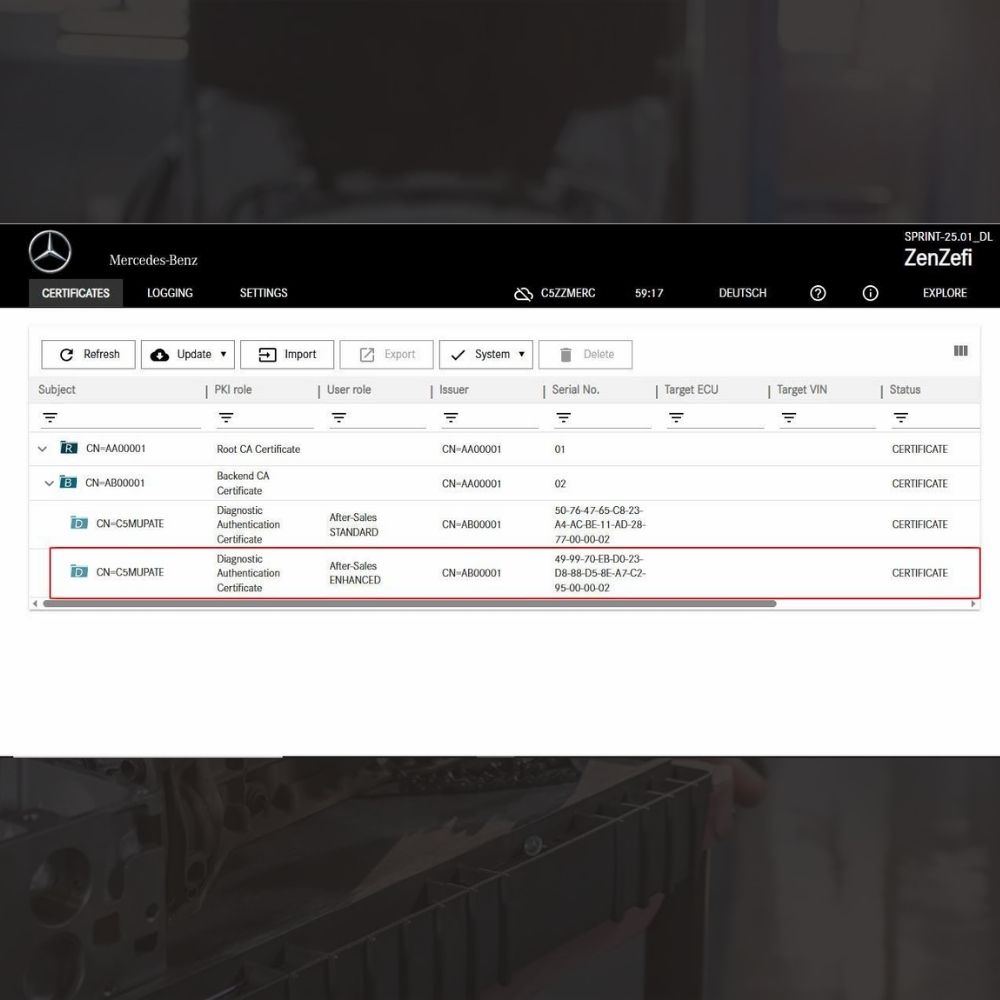
New Mercedes Car Coding Solution with ZenZefi certificate for DTS Monaco 9.02

What is DTS Monaco? Key Functions of DTS Monaco Software
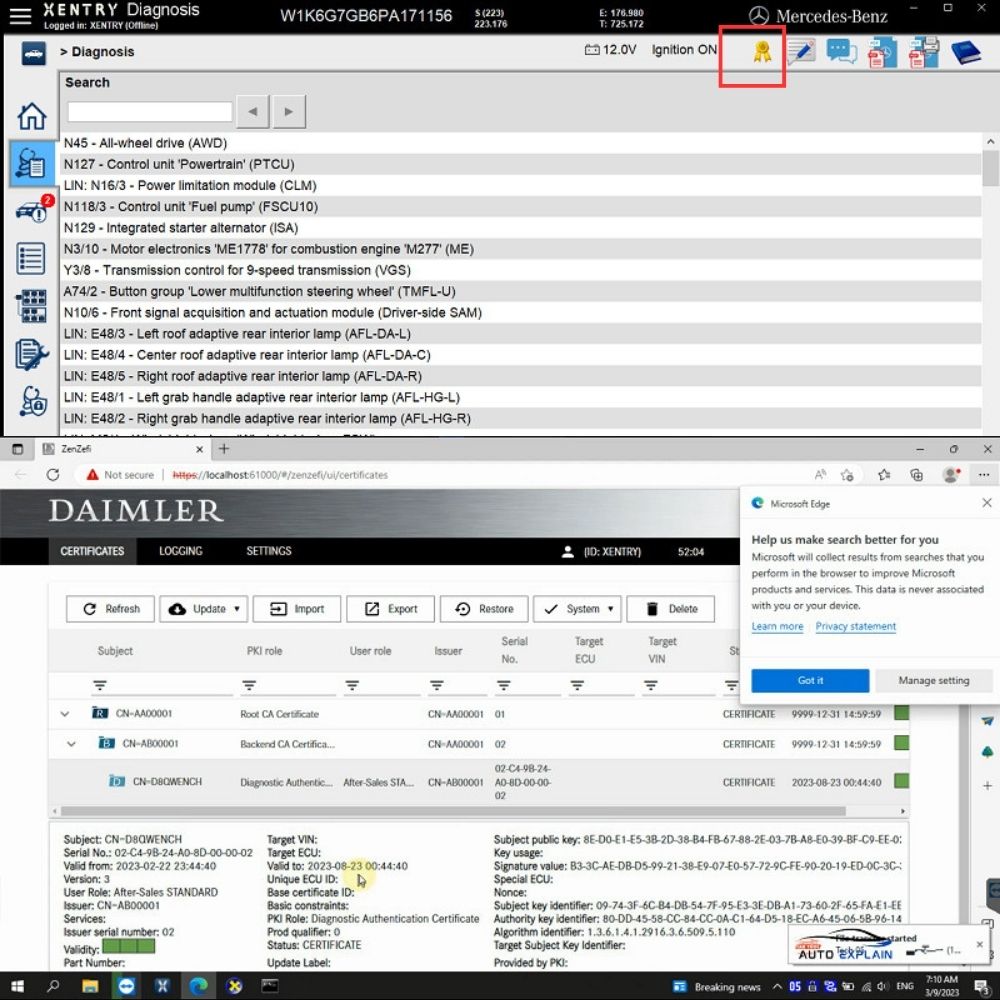
What is the Xentry Certificate Zenzefi? Why You Need It, and When It Is Required?



New Mercedes Car Coding Solution with ZenZefi certificate for DTS Monaco 9.02



